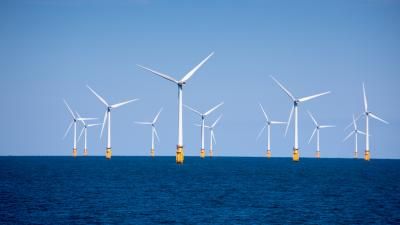Foreword and Background
This page is approximately a 3 minute read
This page was published on

‘As a species, we are expert problem solvers. But we haven’t yet applied ourselves to this problem with the focus it requires.’ - Sir David Attenborough
Foreword
Engineering has long been one of the defining forces of human progress. From aqueducts and bridges to energy networks and digital infrastructure, engineers have translated vision into reality, creating the foundations of modern societies and enabling improvements in health, prosperity, and connectivity.
Yet this legacy is also marked by an unintended paradox. The infrastructure that has enabled human development has simultaneously contributed to ecological degradation, biodiversity loss, and climate instability. The prevailing assumption that nature could be controlled, simplified, or replaced has too often led to the depletion of the very systems on which life depends.
Today, the climate crisis, biodiversity decline, and pervasive pollution are no longer separate challenges but interconnected symptoms of systemic imbalance between human and natural systems.2 Addressing them requires a profound shift in how engineering and the societal systems in which it operates are conceived and practiced. Rather than treating nature as an external constraint, we must recognise it as a partner in resilience, adaptation, and regeneration.
For the engineering profession, this represents a redefinition of purpose. The challenge is not only to minimise harm but to actively design infrastructure and technologies that restore ecological health while meeting human needs. This will require new approaches to standards, education, and practice – embedding ecological literacy and systems thinking alongside technical excellence.
Such a transformation will not be straightforward. It entails navigating institutional inertia, rethinking established methods, and building capacity across professions and disciplines. But it also presents an extraordinary opportunity: to shape a future in which infrastructure contributes to thriving ecosystems as well as thriving societies.
Engineering has always been about solving complex problems. The task now is to harness that ingenuity to ensure that human systems and natural systems are no longer in conflict, but in alignment, building the conditions for long-term resilience and prosperity.
Background
This foresight review is the latest in a series commissioned by Lloyd’s Register Foundation. These reviews aim to identify future trends, explain them in simple terms, understand their impact on the engineered world, describe opportunities and threats that arise from them, and identify what is needed to scale safely and realise the societal benefits.
This foresight review examines the emerging field of Nature-Positive Engineering (NPE) which was identified within a recommendation of the foresight review of ocean engineering.
This review aims to clarify what ‘nature positive’ means when applied to the engineering domain. We explore how NPE approaches are currently implemented, and identify challenges, opportunities and emerging trends, and provide a framework for engineering approaches to protect, restore and enhance natural ecosystems.
The review conducts an in-depth exploration of three key sectors where engineering and natural systems interact significantly: coastal protection and adaptation; ports and offshore renewable energy (ORE). These sectors were selected because they play crucial roles in building climate resilience, supporting decarbonisation efforts, and protecting marine environments – some of our planet’s most vulnerable and valuable ecosystems.
The findings of the review draw from extensive global engagement efforts, including:
- five roundtables that brought together over 200 key stakeholders from 30 countries across four continents
- one-on-one interviews and focus groups with 30 subject matter experts
- an open global call for input, and
a comprehensive examination of published literature, case studies, and existing resources
The engagement process incorporated diverse perspectives from across the engineering profession, government agencies, academic institutions, civil society organisations, energy companies, port operators, and financiers.
The findings and recommendations of the review are intended to bring clarity, catalyse action from the engineering community, and support and accelerate the safe adoption of NPE at scale.
- 2
McElwee, P. et al. (2025). IPBES Nexus Assessment: Summary for Policymakers. Bonn: IPBES Secreteriat. (IPBES Nexus Assessment: Summary for Policymakers)
